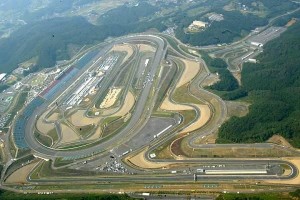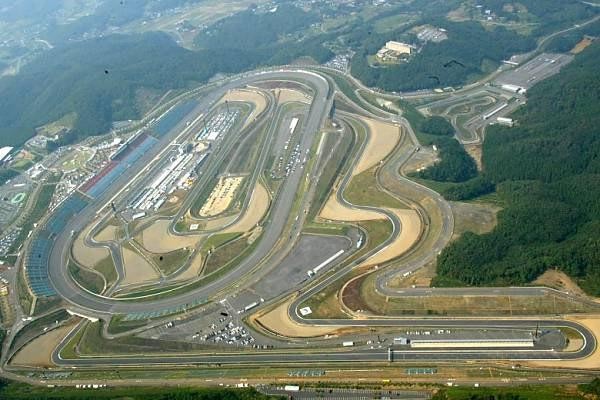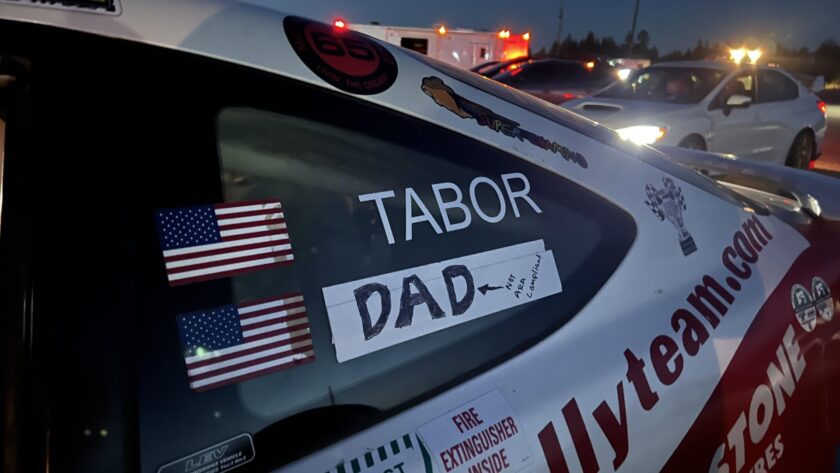 There’s be a LOT of comments and worry about the radiation levels and the health risks that drivers and team personnel will be facing as they compete at the Twin Ring Motegi circuit in Motegi, Japan which is located 78 miles from the Fukushima Dai-ichi nuclear power plant which catastrophically failed during the Honshu earthquake and subsequent tsunami. I thought it might be advisable to bring some perspective as to just what the level of risk is compared to activities we take for granted and don’t even think about in our daily lives.
There’s be a LOT of comments and worry about the radiation levels and the health risks that drivers and team personnel will be facing as they compete at the Twin Ring Motegi circuit in Motegi, Japan which is located 78 miles from the Fukushima Dai-ichi nuclear power plant which catastrophically failed during the Honshu earthquake and subsequent tsunami. I thought it might be advisable to bring some perspective as to just what the level of risk is compared to activities we take for granted and don’t even think about in our daily lives.
After concerns from various MotoGP riders, most notably Casey Stoner who was adamant about not going to Motegi, the FIM and Dorna Sports commissioned the Italian environmental agency, ARPA, to conduct a study on the radiation dosage to which team personnel would be subjected over the course of a one week stay. ARPA’s final report on the matter came out a little over a month ago and can be found on the FIM website.  The report contains their methodology, results of individual tests from a variety of potential sources including airborne particulates and gaseous inhalants in situ measurements at the circuit, analysis of local food and beverage products complete with source region analysis, and soils analysis from various locations around the paddock and circuit. After combining all of the data into a single dosage level given a typical “Italian’s” diet, the resulting figure was that a one week stay would result in a dosage of 30 micro-Sieverts (30 µSv)1. Now, let’s take a look at some other activities one would normally go through and look at the relative risk.
The report contains their methodology, results of individual tests from a variety of potential sources including airborne particulates and gaseous inhalants in situ measurements at the circuit, analysis of local food and beverage products complete with source region analysis, and soils analysis from various locations around the paddock and circuit. After combining all of the data into a single dosage level given a typical “Italian’s” diet, the resulting figure was that a one week stay would result in a dosage of 30 micro-Sieverts (30 µSv)1. Now, let’s take a look at some other activities one would normally go through and look at the relative risk.
Probably the greatest radiation exposure risk that team personnel and drivers will be facing as they head to Motegi is the commercial flight there and back. Our atmosphere protects us from most of the high-energy cosmic and solar particle and gamma radiation. As one ascends in altitude, the air mass above you protecting you from those extraterrestrial radiation sources rapidly diminishes. At a typical cruising altitude of 35k ft, one can expect to be exposed to 2.38 µSv/hr2. Given that a typical flight between Indianapolis and Tokyo lasts between 15 and 20 hours, depending upon the route, I chose a median estimate of 35 hours in flight for the round trip. That equates to a total exposure just from the journey to and from Japan of 83.3 µSv. Now stop and consider that number alone. The exposure due to the roundtrip flight is 2.78x that of a one-week stay at Motegi! That number, by the way, is a conservative estimate. During a period of high solar activity such as we’ve experience recently with double blasts of X-class solar flares and subsequent impact of the associated coronal mass ejections (CMEs), that dose rate increases.
Ok, so now I’m paranoid of flying, what if we all just stayed home? Ok, let’s look at your normal background-level radiation at your home here in the US. If you live near the Gulf or Atlantic coastlines, you have a couple of things working in your favor: stable geology, and lower altitude. If we make a rather unrealistic assumption that you have zero exposure to radon gas, a natural radioisotope found in most parts of the US, and you don’t live near any powerplants, either nuclear or coal, then your rate of exposure is 16 µSv/wk3. That’s only half of the Motegi value. If we’re more realistic and consider a typical Indianapolis brick/stone-sided residence and 140 hours in the air annually flying to and from races and testing sessions, the weekly rate rises to 77 µSv/wk3. For drivers like Justin Wilson who live at higher altitude locations, that weekly rate soars to 88 µSv/wk3. All of this is excluding the effects of medical scans such as X-rays, MRIs, or CT scans. A lumbar spinal X-ray yields a dosage of 6000 µSv per image3!
Popular culture’s paranoia and a general misunderstanding of our daily levels of exposure has made radiation into a boogeyman. To be sure, radiation exposure at high levels or over prolonged period of time can be extremely hazardous and should not be treated lightly or ignored. Safe handling of radioisotopes and proper protection when in regions of elevated radiation levels are imperative. However, the risks facing drivers and team personnel at the Twin Ring Motegi circuit in Japan are minimal when compared to what we experience in our daily lives here in the MidWest. It’s time that we as fans, and those who are involved in the sport, including certain long-haired NASCAR-bound drivers, step back from the hype and paranoia and do our part to support the people of Japan as they continue to try and rebuild after the double catastrophe of the Honchu earthquake and tsunami. Time for us to think clearly and responsibly, and not be slaves to fear and paranoia.
1 – Radiation measurements in Motegi (Tochigi Pref. – Japan) Preliminary Report, Arpa Emilia Romagna – Sezione di Piacenza – Centro Tematico Regionale Radioattività, July 22nd, 2011.
2 – Radiation Exposure During Commercial Airline Flights, Health Physics Society.
3 – Radiation Dose Charts, American Nuclear Society.





Wow never thought I would hear the day that a MotoGP rider was afraid of a little radiation. Cmon stop being such a tool. You strap yourself to a crotch rocket with a quarter inch of leather on you and fly around corners inches from the ground. Time to put on your ball sack and get back to racing.
Great article Doug! When you lay it out like that, it’s tough to ignore the facts. It is another situation of people making rash decisions based on what the media portrays. And as we all know, the media likes to blow things out of proportion so that they get more viewers/listeners. Thanks for the info!
Much of this is fueled by the fear-mongering the U.S. Media can do so well. Irene was bad for some places–but for most it was not that bad of a storm, however the media made it sound like the worst hurricane ever leading up to landfall. I love how you really put the scientific facts out there, rarely do we get “facts” in reporting elsewhere. Dirty little secret for many, America has a bigger threat of contamination than Japan.
[…] concluded that it was absolutely safe for the series to run the track. Doug at Open Paddock wrote a very good article about the radiation levels in Japan in comparison to amounts we all receive on a daily basis. He […]
[…] that have shown that radiation is not as big an issue as it has been made out to be (see this excellent post at OpenPaddock by @xorpheous, Doug Patterson for more information). I can more understand the […]